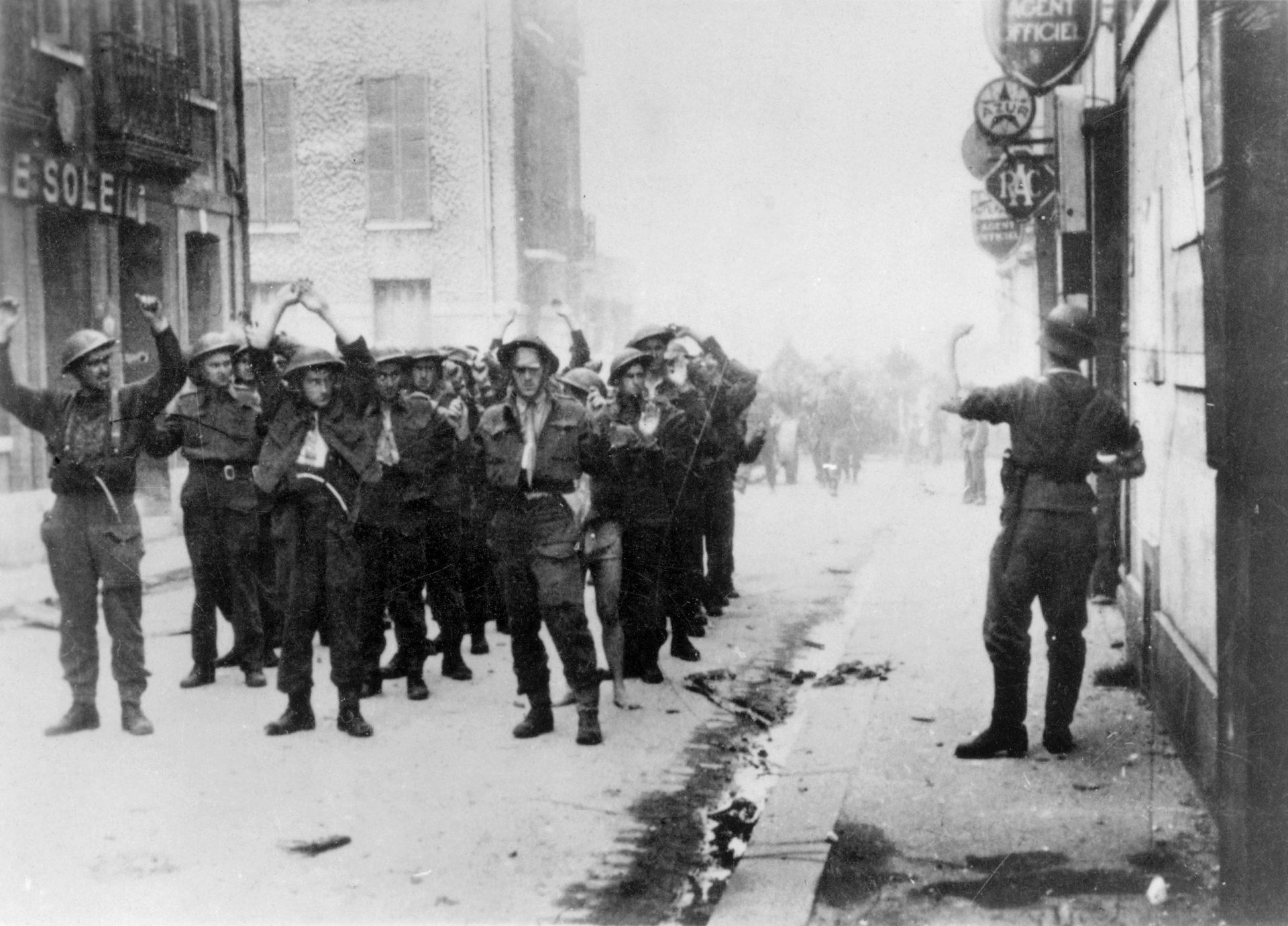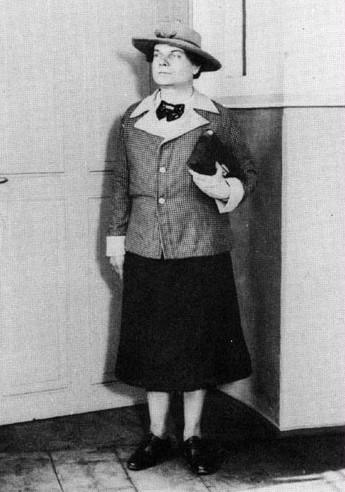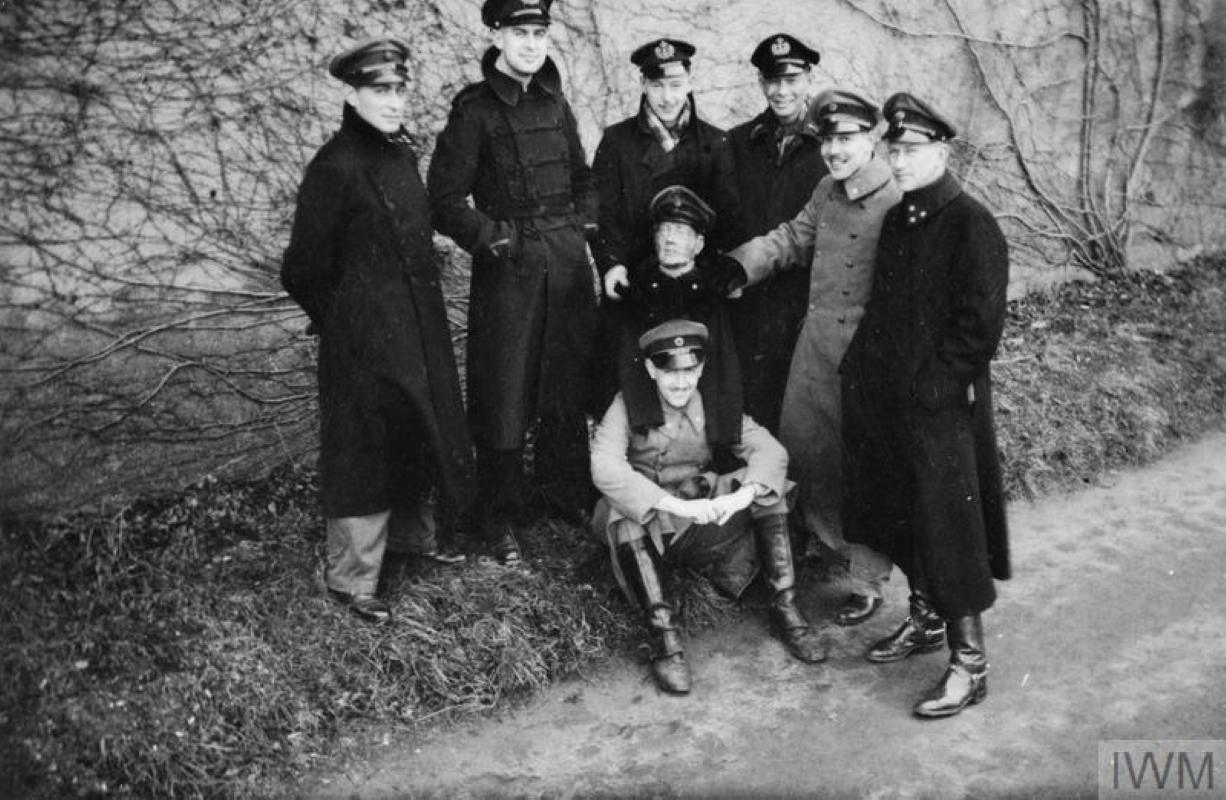THE VICTIMS OF JUBILEE
THE HUMAN TOLL
The Dieppe Raid was one of the bloodiest battles for the Canadian army, which came away from the operation with over 60% casualties. Most soldiers were killed or wounded on the beach as German machine guns shot them down while they disembarked from the boats. With almost no way to protect themselves from enemy fire, the Allied soldiers were open targets for the defenders. The only thing that many Allied troops could do was hide among the corpses until the end of the raid.
TAKEN PRISONER
During the retreat, many men tried to get back to the ships while being fired on by the Germans. However, most of the landing craft had been destroyed, and the men often had to swim to the heavy vessels further out from the beach. The swimming was hard, and many men who were injured and exhausted by the assault did not reach the ships. Those trapped on the beach were arrested by the Wehrmacht soldiers. Overall, 1,946 Canadians were captured after the raid.

LIFE AT THE
GERMAN CAMPS
The survivors of the raid were immediately transported to German prisoner of war camps. Most of the Canadians were sent to the Stalag 8B camp in Lamsdorf, but others were assigned to Oflag 7B in Eichstätt or Stalag 9C in Mühlhausen. Canadians were not the only ones in these camps, which also housed soldiers from Great Britain, America, New Zealand, Australia, France, Russia and other nations.
The conditions were harsh, and many prisoners said that they only survived thanks to food, medicine and clothing parcels from the Red Cross. Without that aid, the men would only get small, unhealthy rations that sometimes had rotten food. While many camps had well-run military hospitals, the prisoners’ quarters were appalling, as the men had bedbugs, lice and rats as roommates.
The German guards did not perform the same sadistic acts carried out at extermination camps elsewhere in Europe. Many Canadian soldiers noted that the guards were relatively friendly with them. In fact, the prisoners and the guards would often exchange various goods together. However, the Germans showed a different attitude toward the Slavic prisoners, and the guards’ brutality toward them shocked many Canadians.
Restraints as retribution
One goal of the Dieppe Raid was to capture German soldiers. However, after the fighting, the German defenders discovered Allied documents that explained how to handcuff an enemy soldier. When he learned this, Adolf Hitler was outraged and, as retribution, ordered all Dieppe survivors at the prison camps to have their hands restrained. The Allied leaders were shocked at this treatment and in turn restrained many German prisoners in Britain and Canada. The survivors of Dieppe had to live through this daily punishment, first with rope then with chains, for many months (source: Jonathan F. Vance, The Journal of Military History, 1995).
What is the difference between a prisoner of war camp, a killing center and a concentration camp?
Immediately after the Nazis came to power in 1933, concentration camps were set up to imprison anyone considered ‘enemies of the Reich.’ Prisoners were exploited for their labor and often subjected to torture, starvation, and medical experimentation.
Killing centers appeared in Eastern Europe shortly after Nazi Germany invaded the USSR in June 1941. They were designed to systematically exterminate large numbers of people, particularly the Jewish, Roma and Sinti communities.
Prisoners of war (POW) camps were designed to detain military officers and personnel captured by the Nazis. Conditions at the POW camps were generally miserable, and some prisoners were forced to work.
Section written by Sara-Jane Vigneault, Curator – History for the Montreal Holocaust Museum.
CUNNING ESCAPES
Many prisoners tried to escape the Germans from day one. A soldier named Lucien Dumais made the attempt by jumping off a train en route to the camps. He crossed through occupied France with the help of the Resistance and made it to Great Britain, where he continued to serve in the war. Many soldiers escaped through military hospitals in France, which generally had fewer guards. Captain John Runcie of the Queen’s Own Cameron Highlanders escaped through a window of one of these hospitals after faking appendicitis.
At the camps, the Dieppe Raid survivors planned their escape in all sorts of ways. The men were not subjected to forced labour, but they could volunteer to work outside the camps. This made it easier for them to escape. John H. Kimberley of the Royal Hamilton Light Infantry made several escape attempts by switching identities with another prisoner. Although he was recaptured twice, his last attempt hit the mark and he escaped in September 1944.
The men were very creative and used multiple types of disguises, planned tricks to deceive the guards, or improvised ways to remove their handcuffs. However, the courage of many resistance fighters and civilians outside the camps also helped these men return home.
Right : Prisoners often disguised themselves to escape, and the more elaborate the get-up the better. French Lieutenant Bouley spent months working on his costume only to be recaptured in a few minutes.














